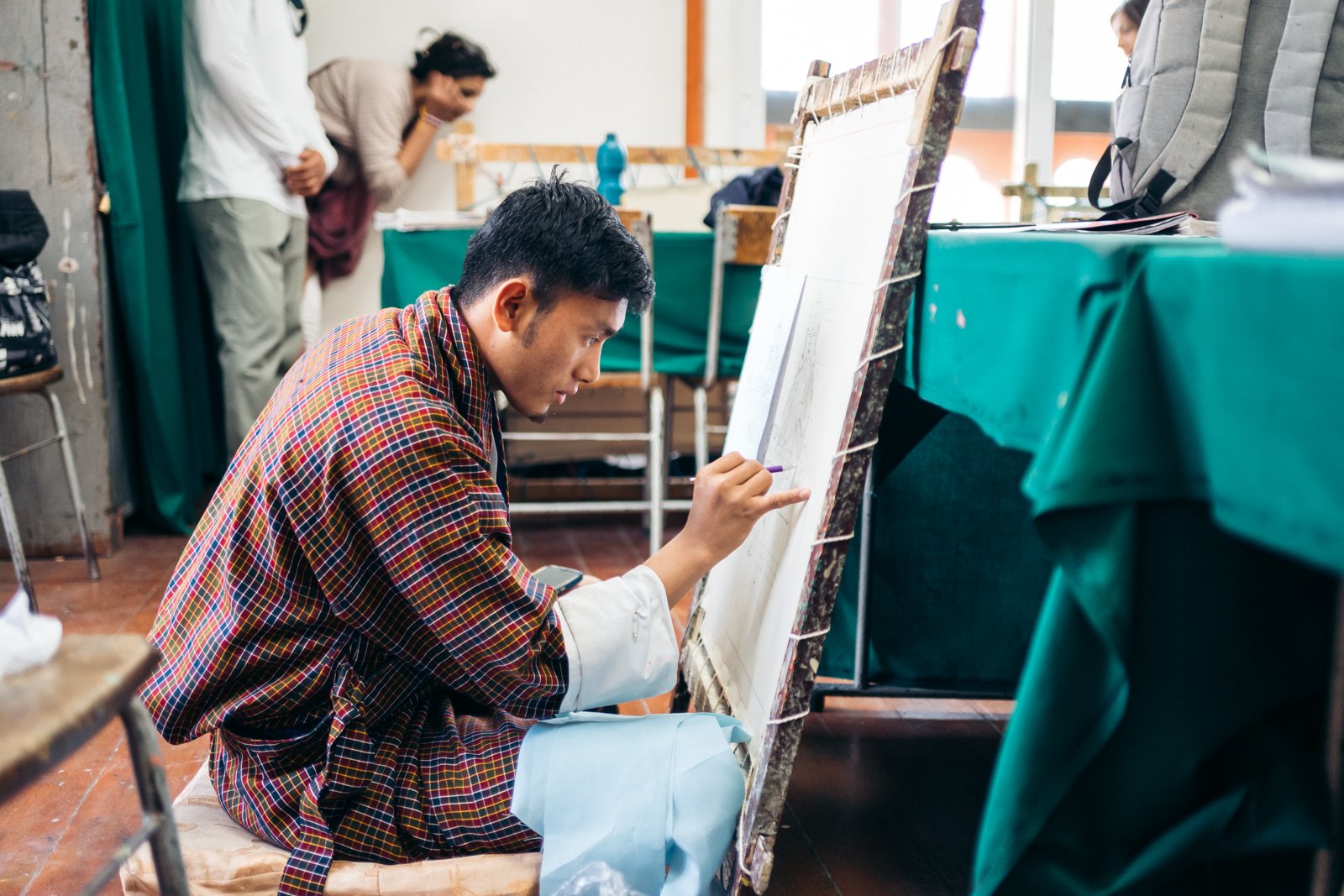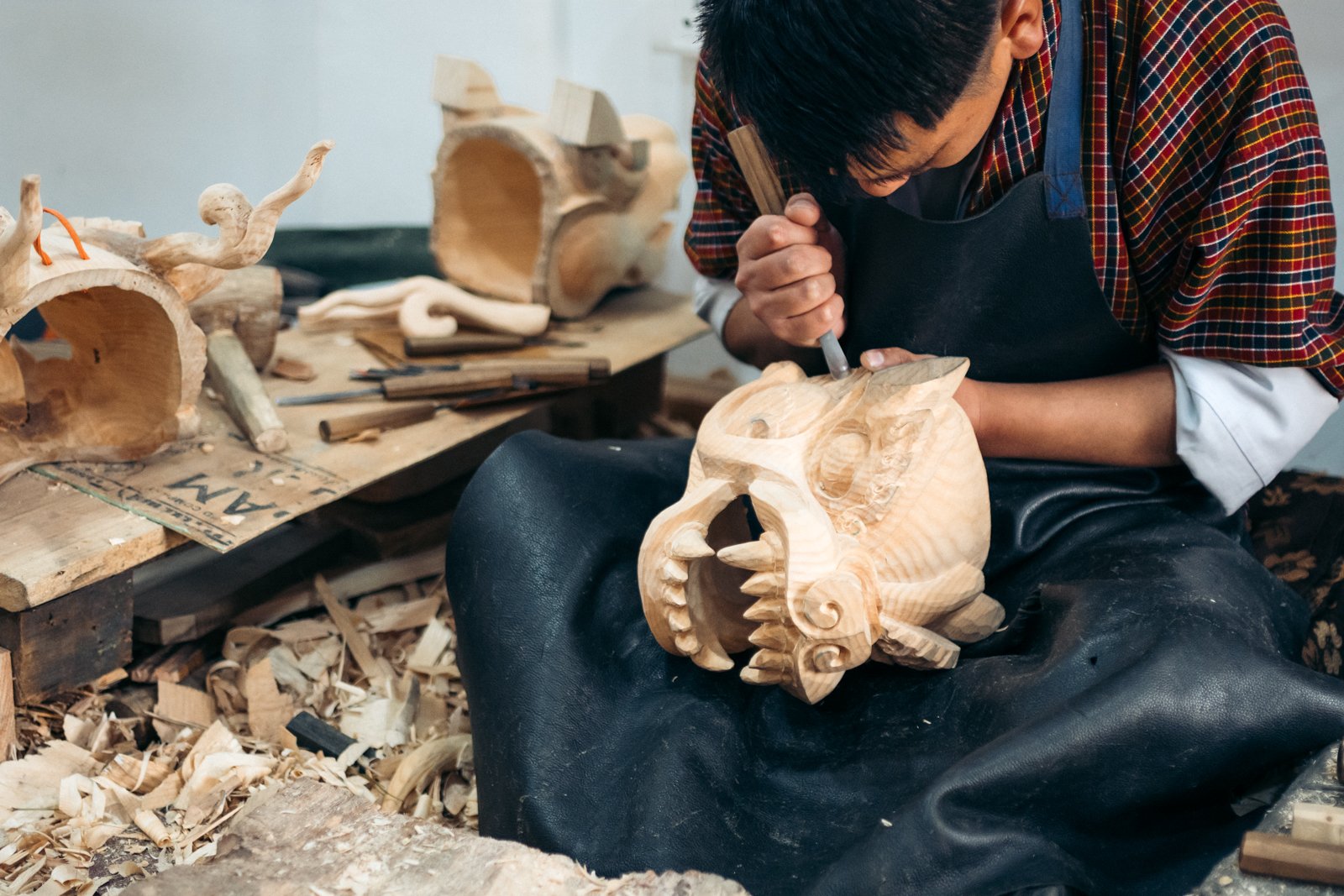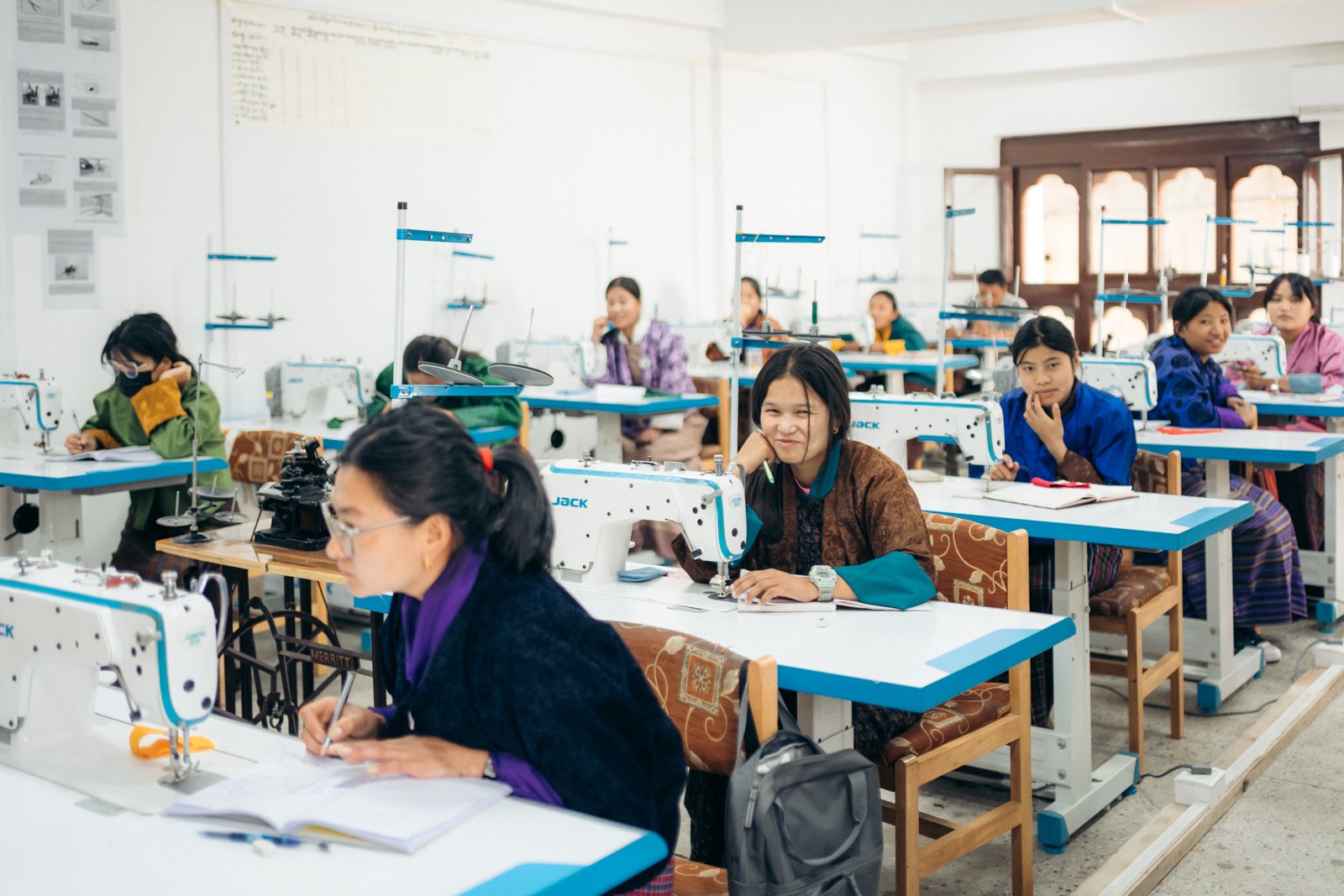Five Days in Bhutan with Toddlers
Bhutan, often referred to as the “happiest country in the world” has been a long-awaited adventure for our family since our arrival in Asia. My husband, an ardent hiker, was particularly drawn to Bhutan’s mountains and the promise of scenic hiking opportunities. Beyond its outdoor allure, Bhutan’s unique status as the world’s first carbon-negative country piqued our curiosity, promising a trip filled with discovery and learning.
Being carbon-negative means the country removes more carbon dioxide from the atmosphere than it emits. Bhutan has achieved this through reforestation and strict parameters for the tourism industry that the government closely monitors. By maintaining these regulations around tourism, they ensure minimal impact on their environment and culture.
Prayers flags in Bhutan
Bhutan did not allow tourists to enter the country until 1974. Now, tourists must pay a daily fee for each day in the country. That fee is $100/day for adults, lowered previously from $200/day. Bhutan’s goal with tourism is to ensure it is mutually beneficial for visitors and local communities; daily fees are invested into schools, healthcare, and other community programs. You can only go to Bhutan by booking through an authorized tour company. We used Breathe Bhutan, who were fantastic.
As we prepared for the trip, I couldn’t help but feel a bit anxious. I often get migraines from motion sickness, and we were heading to a country with the highest average elevation on the planet and notoriously curvy roads. On top of that, we were bringing our two young children, ages three and 20 months, and were unsure how they would handle the altitude. However, with a day in Nepal to acclimatize, Scopolamine patches, and plenty of water, we managed to navigate the roads and altitude of Bhutan without any issues, and our children adapted surprisingly well.
Day 1
We landed in Bhutan at noon and were greeted by our guide for the week, Chozin, who was from Breathe, Bhutan. He donned us with scarves, flowers, and a welcome drink of rice wine. Our first destination was Thimphu, the country’s capital and located about an hour’s drive from Paro, where we had arrived.
We settled into our lovely boutique hotel, Pema, let our kids nap and then started again in the late afternoon at the Royal Takin Preserve. I had never heard of a takin or seen one, so that was a fun way to start the trip.
Takin
The takin is native to the eastern Himalayas, and our guide described it as having the head of a goat and the body of a cow. Due to the loss of land and hunting, their numbers have declined significantly over the last several years. Bhutan now focuses on conserving this unique species as they are symbols of the country’s culture and heritage.
After we left the preserve, we walked through some of the best outdoor markets I have ever seen. The markets offered myriads of stalls as far as the eye could see of fresh produce, meat, grains, and other goods. After the market, we finished our evening by enjoying dinner at a local restaurant, where the chef served us various regional dishes and veggies bursting with flavor.
Covered outdoor market in Bhutan
Day 2
Druk Wangditse Temple
Our first hike was to Druk Wangditse Lhakhang, built in the late 19th century and one of the oldest temples in Thimphu. It’s an easy 30-minute hike to the temple with beautiful views of the valley below billowing prayer flags. We were among the few people at the temple that morning, welcomed by the head monk on site and the beautiful spring weather. As a note, we visited Bhutan in the first week of April expecting cooler to cold temperatures. We were met with warm spring days, typically hitting a high of around 70 daily. It was perfect; crisp mornings and mild, warm temperatures were ideal for hiking and sightseeing during our time there.
Dorji Tsheri, Wangditse Lam at Druk Wangditse
After we left Druk Wangditse Lhakhang, our next destination was the National Institute of Traditional Medicine. This museum showcases over 300 herbs, minerals, and animal parts used in making herbal medicine at the hospital next door. The next stop at the National Institute for Zorig Chusum was one of our son’s favorites on the tour. This art school was established in 1971 by the Bhutanese government to preserve traditional art and teach 13 craft skills. Those skills are:
Calligraphy
Traditional Painting
Wood Carving
Bamboo Weaving
Carpentry
Paper Making
Masonry
Sculpturing
Goldsmith
Silversmith
Blacksmith
Embroidery
Bronze Casting
The second room we visited was one of the wood carving rooms, and the high school-aged boys graciously invited our son to sit down in an empty spot and “work” on a wood carving using their tools. We will never forget their kindness to our son. It was all we could do to get him to leave that room. Attendees of this school typically spend 4-6 years perfecting their craft. Then, they can open their shops to sell these traditional Bhutanese art pieces. Many of their works are displayed in Thimpu’s storefronts.
After we left the art school, our next stop was the Buddha Dordenma Statue. This giant golden Buddha houses another 125,000 miniature Buddhas inside. Though it was pretty windy while we were there, it did not stop our kids from enjoying the wide-open areas in front of the statue and running around and chasing each other. After enjoying our time at the Buddha Dordenma Statue, we stopped for lunch as we started the drive towards Punakha, a two-hour drive northeast.
Buddha Dordenma Statue
During lunch, we were invited next door to the restaurant owner’s house to watch as they had a house full of monks performing a traditional ceremony. The ceremony was to grant wishes, peace, and prosperity throughout the year, and we were told by the monk leading it to put our wishes into the universe. At the same time, the students played their instruments and sang. We sat down after the ceremony for tea and biscuits with the gracious family.
Special ceremony in Bhutan
Next, we stopped at Dochula Pass, a memorial of 108 chortens (important monuments or shrines in Bhutan), to commemorate the lives lost in Bhutan’s only war. The war lasted one day, and Bhutan was successful in driving out rebels from India, but unfortunately, the lives of many Bhutanese soldiers were lost. King Jigme Singye Wangchuk approved the construction of the Druk Wangyal Chortens, and the memorial was completed in June 2004.
The memorial is a popular tourist attraction along the route to Punakha, offering stunning views of the Himalayas peppered with bright prayer flags swaying in the breeze. Our last stop of the day before heading to our hotel was the Temple of the Divine Madman, Chimi Lhakhang, Bhutan’s sacred fertility temple. Bhutanese say the site was blessed by the Divine Madman himself, Drukpa Kunley, and was constructed in 1499. As you enter the town where the temple is located, you are greeted with phallic art everywhere. In Bhutan, they are seen as a sign of good luck and instruments to ward off evil spirits. The temple is a popular site for couples struggling with fertility issues. Women who come to the temple hoping to conceive are told to wear a wooden phallus on their backs and walk around the temple three times. There are photo albums displayed of couples worldwide who were blessed with children after their trek to the temple.
Temple of the Divine Madman, Bhutan
At last, we checked into our hotel for the next two nights: the Dhumra Farm Resort, a boutique eco-resort hotel nestled high on the hillside with stunning views overlooking the valley below and the majestic Punakha Fortress. Our accommodations were lovely, and every meal was served in the intimate dining room, utilizing some ingredients from the garden outside.
Day 3
After breakfast at our hotel, we set off for the next hike on our trip to Khamsum Yulley Namgyal Chorten, one of the newer temples in Bhutan, completed in 2004. The hike to the temple takes around 45 minutes, with views overlooking the rice fields and farms below. After our hike to and from Khamsum Yulley Namgyal Chorten, we walked across the longest suspension bridge in Bhutan, the Punakha Suspension Bridge, which spans 230 meters over the Pho Chu River. The bridge is adorned with prayer flags and has a slight sway from the breeze as you cross.
Start of the hike to Khamsum Yulley Namgyal Chorten
We opted for a picnic-style lunch along the river with the Punakha Fortress in the background. When our guide mentioned a picnic lunch, I thought it would be a blanket on the ground and a simple lunch. We arrived at a tent with a set table, place settings, and a wonderful hot lunch. Much to our son’s delight, a pack of horses trotted by, and he spent his lunch hour searching for the best sticks and rocks along the water while we enjoyed our lunch.
Young students entering Punakha Fortress
After lunch, we toured the stunning Punakha Dzong (fortress), which is the second oldest building in Bhutan. It was constructed in 1637 by Zhabdrung Ngawang Namgyal, Bhutan’s founder, and serves as the administrative center for Punakha. In addition to being a main tourist attraction, religious ceremonies, and festivals are held here throughout the year, and it serves as the winter residence of the Dratshang (central monk body). The day’s last stop was the Sangchhen Dorji Lhuendrup Lhakhang Nunnery, a nunnery for college-aged women. When we asked how many students were currently attending, one of the students guessed around 60 women. We relished the early evening back at the hotel to relax after a few busy days with the kids.
Punakha Fortress
Day 4
This day was the slowest-paced day of our journey. We checked out of our hotel and started the drive back towards Paro. Along the way, we stopped at a beautiful nature park with rhododendrons in bloom and a small playground where the kids had to spend some time running around. That afternoon, we had lunch with the owner of Breathe Bhutan. During lunch, we met a family from England who were traveling with their two children. Much to my husband’s dismay, we finished the day donning Bhutanese traditional dress and taking photos in our attire.
Day 5
Finally, the day had arrived; it was time to hike to the iconic Tiger’s Nest Monastery. We woke at 4:30 a.m. and munched on breakfast while driving to the starting point. Our guide estimated it would take us 2.5 hours to get to the top, not including a stop at the halfway point. As we started the hike, we were the only ones on the trail. My husband carried our three-year-old son the whole way in his carrier while Chozin, our guide, insisted on carrying our daughter in her carrier. Our walk time to the top was under two hours, not including the stop at the halfway point. As the iconic monastery, Paro Takstang, comes into view, it’s almost like seeing a mirage perched on the cliff. It’s right in front of you, but you still have a bit of distance to hike down stairs and back up to reach the temple entrance.
Once you arrive at the monastery, the security guard takes all of your belongings and places them into a locker. No photography or videography are allowed inside. You will have to take my word, it is beautiful and there are eight smaller temples inside.
This hike was our favorite on the trip, and as we made our way back down through the crowds of hikers, they cheered my husband and Chozin on as they trekked with the kids in the carriers. We made a quick stop to hang our very own prayer flags and finished our descent back down the mountain. Having worked up an appetite with our six-mile trek, we stopped for lunch at a local’s home, where we dined on rice, a Bhutanese dish of beef and peppers, dumplings, potatoes, and soup. After a brief toddler yoga session, we returned to the hotel to rest for a few hours.
We finished our last day in Bhutan by playing the traditional sport of archery. My husband was a natural with a bow; I am why they are now missing two arrows. We also tried our hand at darts before ending the evening with a fantastic dinner and, sadly, packing our bags.
Our time in Bhutan was our family’s perfect last trip before our summer 2024 move. We encountered a few toddler meltdowns, which is expected when traveling with two young children, but we couldn’t be more grateful for our guide, Chozin, who went out of his way to help us with the kids the entire trip. He insisted on carrying one during every hike and was extremely patient when they did have their moments. Our hearts are filled with gratitude for the memories created as a family during this once-in-a-lifetime trip to the happiest country in the world.
Tour Company: https://www.breathebhutan.com
Find this post helpful?
Pin it for later!






















